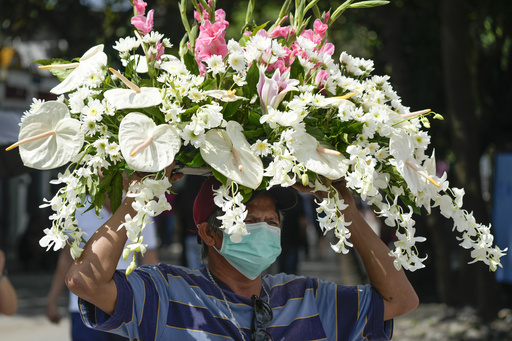
WARSAW, Poland — As the year comes to its closing months, it is traditionally believed that the boundary between the living and the deceased becomes blurred. This ancient belief has evolved over time, culminating in the contemporary celebration of Halloween.
However, just after Halloween, Christians around the globe observe All Saints’ Day, a solemn occasion in the church’s liturgical calendar, celebrated on November 1. This day, with roots deeply entwined in pagan traditions, serves to remember saints and martyrs. The term “Halloween” itself is derived from “All Hallows Eve,” signifying the night before All Saints’ Day, which honors those deemed holy—an observance that began with the Roman Catholic Church in the medieval era.
Experts suggest that the ghostly elements associated with Halloween can be traced back to Samhain, an ancient Celtic festival linked with harvest-time. Professor Morgan Shipley of Michigan State University describes this period as one of transition from the bountiful summer months to the starkness of winter. “It was believed that during this time, the separation between the physical world and the spiritual realm lessened,” he explained.
During this festive period, various spirits were often seen as malevolent, leading to the tradition of lighting bonfires to drive them away or utilize them in divination rituals by druidic figures. Over time, with the spread of Christianity, several pagan practices were integrated into this new religious framework, maintaining a continuity in honoring the dead that persists until All Souls’ Day on November 2.
In Central Europe, particularly among Slavic and Baltic communities, unique customs have manifested that facilitate a connection with the deceased on the nights of October 31 and November 1. In predominantly Roman Catholic regions, this observance attracts both believers and non-believers alike.
In Poland, All Saints’ Day assumes profound significance. Many individuals journey back to their hometowns to unite with loved ones, honoring those who have passed away. The sheer number of cemetery visitors transforms these sites into breathtaking displays of flickering lights, a sight potent enough to move even the most secular souls. Major cities like Warsaw and Krakow enhance their public transport services to accommodate the surge of visitors seeking to commemorate their departed.
The reflections on this day are largely personal, with individuals lighting candles in remembrance at the graves of national heroes. The high volume of individuals visiting cemeteries infuses the occasion with a sense of community. It is now customary for Polish people to leave candles at Jewish and Muslim cemeteries as part of their observance.
In the Philippines, millions flock to cemeteries annually on this day, visiting the graves of their loved ones. At the Manila North Cemetery, thousands can be seen bringing flowers and candles to honor the deceased. Manila resident Dory Oliquino, affirming the deep-rooted connection with her loved ones, stated, “Even if I’m old, I still visit the tombs of my relatives, especially my husband’s, during All Saints’ Day. As long as I can walk, I will visit him.”
The observance of All Saints’ Day has morphed into a gathering point for many Filipino families, where they vigilantly hold memories of their deceased. “All Saints’ Day is the day we celebrate and remember our departed loved ones, ensuring that the memories we shared remain vivid,” noted Luis Montibon.
In Italy, families customarily pay their respects to the deceased on All Souls’ Day by visiting cemeteries, laying flowers, and lighting candles. Pope Francis is scheduled to visit Rome’s Laurentino Cemetery to celebrate Mass and pray for the departed. This marks a return to the site he visited in 2018, where he paused to pray for deceased fetuses.
Amid the approaching holidays, discussions regarding the compatibility of Halloween with Christian beliefs regarding the afterlife have intensified. Although Halloween celebrations began in Poland following the fall of communism in 1989, some are concerned that the influx of this foreign custom may overshadow or undermine the significance of All Saints’ Day. Additionally, certain Catholics fear that Halloween’s associations with spirits may carry sinful connotations. In response, some religious groups have initiated alternative celebrations for All Saints’ Day.
Recently, a church group in Plock organized the 3rd All Saints’ Ball, where children dressed as saints or angels to partake in the festivities, as reported by local Catholic news.
